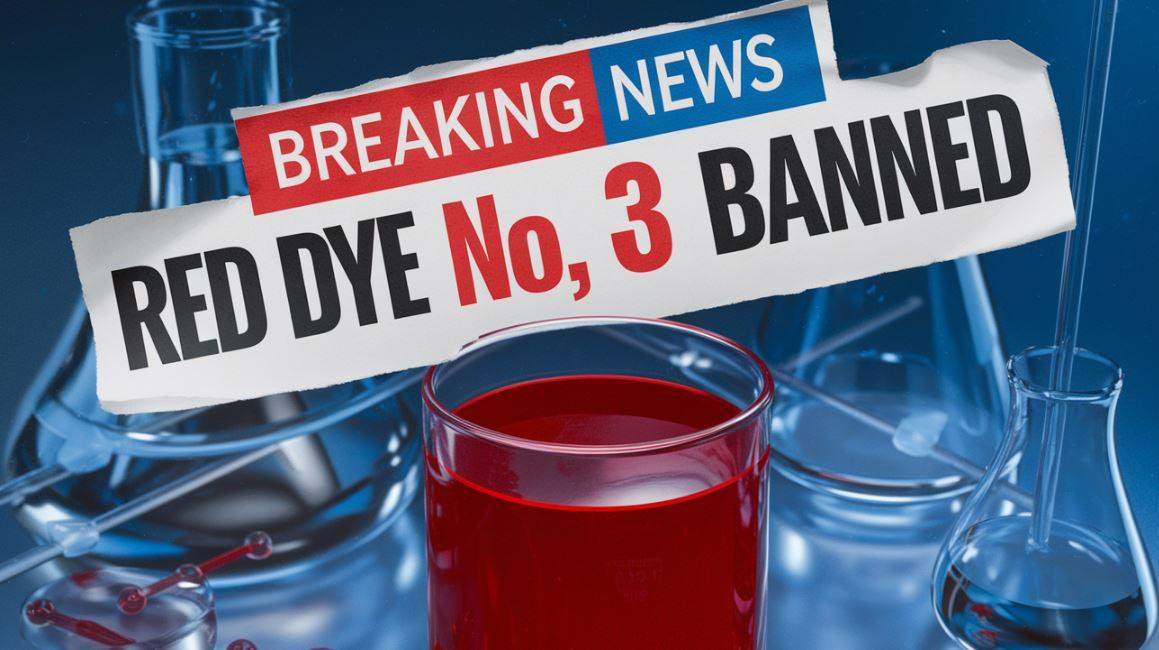Red Alert: Is Red Dye No. 3 Hiding in Your Supplements?
What is Red Dye No. 3?
Red Dye No. 3, also known as Erythrosine (FD&C Red No. 3), is a synthetic red food coloring made from petroleum. It is primarily used to give a bright pink to red hue to foods, pharmaceuticals, and some dietary supplements.
Why is Red Dye No. 3 Being Banned?
Red Dye No. 3 is being banned in foods, beverages, and ingested drugs in the United States, due to evidence linking it to cancer in animals. The U.S. Food and Drug Administration (FDA) announced the decision under the Delaney Clause, a provision that prohibits the use of additives shown to cause cancer in laboratory animals. This follows earlier restrictions in 1990, when the FDA banned the dye in cosmetics and topical drugs after studies identified a link to thyroid tumors in rats. The ban reflects growing regulatory and public health concerns over the safety of synthetic dyes.
When Does the Ban Take Effect?
The U.S. Food and Drug Administration (FDA) announced on January 15, 2025, a ban on the use of Red Dye No. 3 in foods, beverages, and ingested drugs due to its association with cancer in animal studies. Manufacturers are required to reformulate their products by January 15, 2027, for food and beverage items, and by January 18, 2028, for ingested drugs. During this transition period, companies must identify and replace Red Dye No. 3 with alternative coloring agents that meet regulatory safety standards.
Do My Supplements Contain Red Dye No. 3?
Our product experts thoroughly checked our warehouse, conducted online research, and reviewed the products listed on our website, and they found almost no items containing Red Dye No. 3. The only exception was a creatine supplement from Glaxon, a brand we no longer carry. The only place you will find this product is in our clearance section where it has been for several months now.
Are All Dyes Bad?
Not all dyes are inherently harmful, but some have raised health concerns depending on their source and usage. Synthetic dyes, such as Red Dye 40 and Yellow 5, are approved by regulatory agencies like the FDA and are generally considered safe when consumed within established limits. However, some studies suggest that certain synthetic dyes may cause reactions in sensitive individuals, such as hyperactivity in children or mild allergic reactions. Additionally, dyes like Red Dye No. 3 have been linked to cancer in animal studies, prompting regulatory bans. Natural dyes, such as beetroot powder and turmeric, are generally regarded as safer alternatives, though they may not provide the same vibrant colors or stability. Ultimately, the safety of a dye depends on its type, individual sensitivities, and the quantity consumed.
What Natural or Healthier Alternatives to Red Dye No. 3 Are Being Used?
Natural or healthier alternatives to red dye no. 3 include colorants derived from natural sources such as beet juice, paprika extract, turmeric, annatto, spirulina, and carmine (made from crushed cochineal insects). These natural alternatives are increasingly being used in fitness-related products like protein powders, pre-workouts, and snacks due to growing consumer demand for clean-label ingredients. Additionally, some manufacturers are opting to remove artificial dyes entirely and instead use no added coloring in their products, prioritizing functionality over appearance. Always check ingredient labels to confirm the type of colorants used in specific products.
What Should I Do Now If I Am Still Concerned?
If you are concerned about dyes in supplements, we recommend carefully reading the product label. In nearly all cases, the specific dyes used will be listed, allowing you to make an informed decision.







